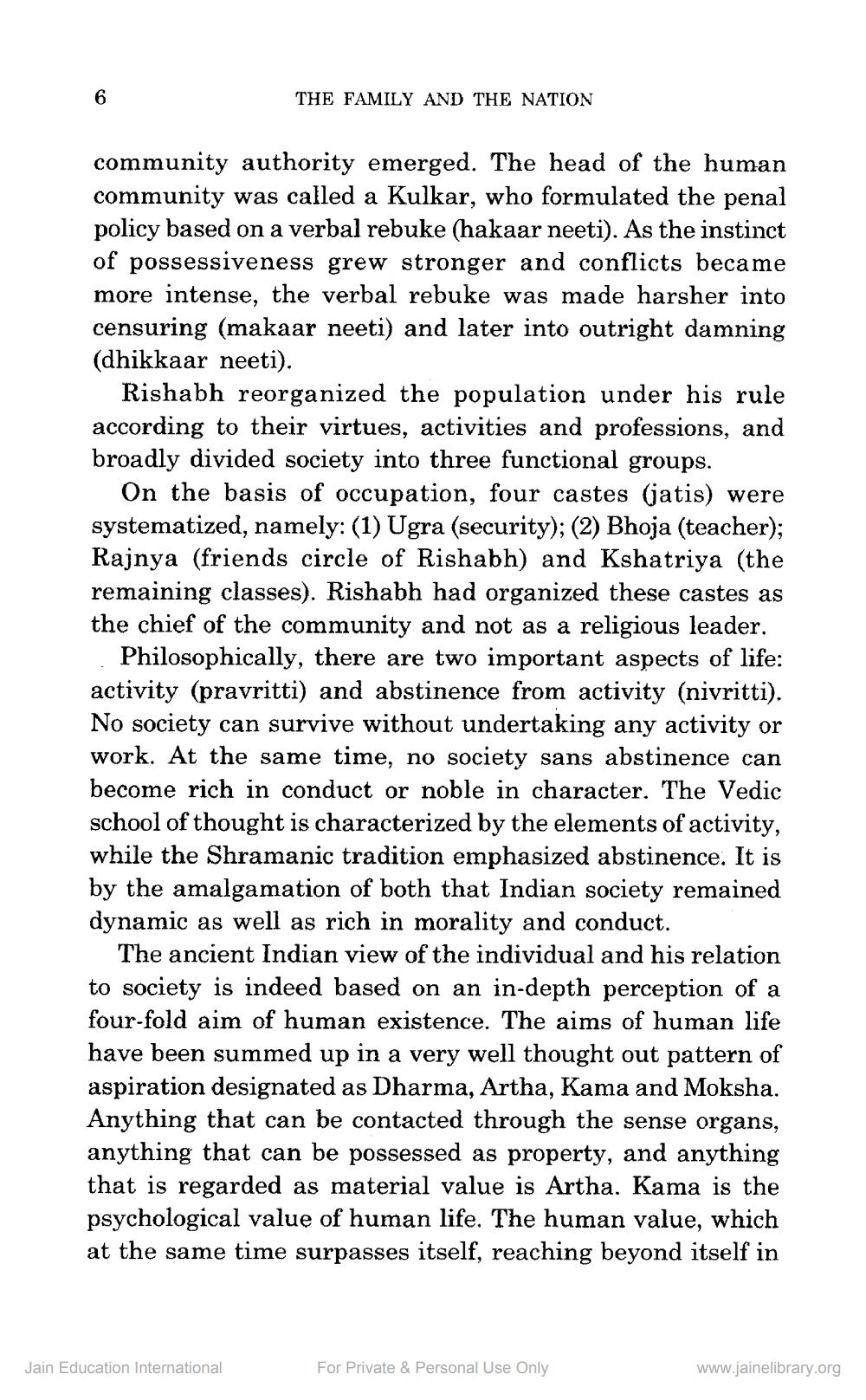________________
THE FAMILY AND THE NATION
community authority emerged. The head of the human community was called a Kulkar, who formulated the penal policy based on a verbal rebuke (hakaar neeti). As the instinct of possessiveness grew stronger and conflicts became more intense, the verbal rebuke was made harsher into censuring (makaar neeti) and later into outright damning (dhikkaar neeti).
Rishabh reorganized the population under his rule according to their virtues, activities and professions, and broadly divided society into three functional groups.
On the basis of occupation, four castes (jatis) were systematized, namely: (1) Ugra (security); (2) Bhoja (teacher); Rajnya (friends circle of Rishabh) and Kshatriya (the remaining classes). Rishabh had organized these castes as the chief of the community and not as a religious leader.
Philosophically, there are two important aspects of life: activity (pravritti) and abstinence from activity (nivritti). No society can survive without undertaking any activity or work. At the same time, no society sans abstinence can become rich in conduct or noble in character. The Vedic school of thought is characterized by the elements of activity, while the Shramanic tradition emphasized abstinence. It is by the amalgamation of both that Indian society remained dynamic as well as rich in morality and conduct.
The ancient Indian view of the individual and his relation to society is indeed based on an in-depth perception of a four-fold aim of human existence. The aims of human life have been summed up in a very well thought out pattern of aspiration designated as Dharma, Artha, Kama and Moksha. Anything that can be contacted through the sense organs, anything that can be possessed as property, and anything that is regarded as material value is Artha. Kama is the psychological value of human life. The human value, which at the same time surpasses itself, reaching beyond itself in
Jain Education International
For Private & Personal Use Only
www.jainelibrary.org




